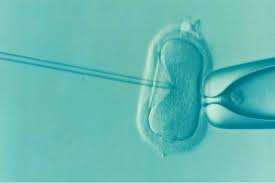Source: entrepreneur.com
The infertility treatment Industry as it stands today is complex, fragmented and requires innovation. Out of the 130 million births worldwide per year, less than 0.5 per cent happens via in-vitro fertilization (IVF) techniques. Compare that to the prevalence of infertility at 15 per cent of reproductive age, the unmet demand today and in the future is enormous. Fertility rates are declining in majority of the western countries, well below the replenishment rates. Access, high costs and low success rates continue to be the dominant challenge in this under researched field of medicine.
The big challenge that lies in front of us is to change the industry from manual and variable to automated and consistent. We haven’t seen a big change in technology in the infertility industry in decades and the reason for that has primarily been the lack of consistent data collection. There is lack of a common language, high variability in different manual operators, limited metrics: fertilization, implantation and live birth, difficulty in isolating variability in individual steps and the overall lack of definition of standard best practices. The low availability of trained embryologists and reproductive embryologist adds hugely to the accessibility problem. It is fair to say that automation and robotics will drive the growth in this industry as it will augment less skilled embryologists with better tools to make the process consistent and safe.
Going into the future, automation can happen at two levels. Firstly, automation can help physicians specializing in infertility to reduce the variability in their set of procedures in the process. From prescribing the right ovarian stimulation protocols, to identifying the right ovarian follicle (vs empty follicles) and then collecting the eggs during the retrieval procedure with minimal discomfort to the patient. An image guided robot can also help physicians to implant the embryo precisely, therefore reducing the variability in results.
Other than the trained reproductive endocrinologist physician, the most important expert in the infertility clinic is an embryologist. Embryologist get hands on training as apprenticeship in existing labs under lab directors and it usually takes multiple years of training to reach a skill level comparable to a top professional. This results in a huge amount of variability, which have been shown in various scientific researches because there is no standardized form of training. Automation can therefore play a pivotal role in making embryology more consistent and reliable.
There have been some attempts at automation in the last couple of years. Automation of vitrification of embryos has been awaiting regulatory approvals and might bring consistency to the vitrification and thawing process. Previously, attempts have been made to use time lapse systems and Artificial intelligence techniques for embryo selection to annotate and analysis the morpho kinetics of embryos for better outcomes. Even though these are great systems and a worthy starting point, they reduce the post fertilization variability of the process. A large part of the inconsistency also happens before fertilization. Steps like selecting the right sperm or the process of intra cytoplasmic sperm injection have large variability depending on different operators. Artificial intelligent and robotics could take over these steps to significantly improve success.
The total size of the global IVF market is going to reach $40 billion over the next decade from the $20 billion currently. It now given that the way forward for infertility is to use artificial intelligence and deep learning models to improve outcomes. However, collecting data in a well-organized and a dependable way remains a challenge. It is imperative that data is collected in a consistent manner, that will allow us to understand the process and give us a sense on how to move forward with different pieces of the technology that can lead to improvement of the final endpoint. This brings along a great opportunity for researchers, scientists and entrepreneurs to invest their time in improving the current process with Artificial intelligence and robotics.
